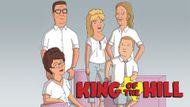When King of the Hill returned this August, viewers were surprised to learn Hank and Peggy Hill had spent years living in Saudi Arabia before coming home. The revival, set 15 years after the original series, treats time as if it passed in real life; so the Hills did move halfway around the world while we weren’t watching.
Series creator Mike Judge, in an interview with Deadline, stated that he and Greg Daniels chose that setting “because it just seemed like a good way in,” giving longtime fans a fresh starting point. As Judge remembers,
“When I would look on Twitter, I would see people saying that Bobby and Connie should be adults now. So, it just seemed like that’s what the universe was telling us”.
This move lets the show grow up, too, showing how characters change over the years away from Arlen, Texas. By placing Hank abroad, the writers isolate him from modern life, and when he comes back, his old-school views clash with today’s world. That setup drives the humor and gives Bobby, now 21, room to shine on his own.
Hank and Peggy found a new life in Saudi Arabia

After Season 13, according to PBS, Hank took a job as “assistant manager in charge of Arabian propane and Arabian propane accessories” on an Aramco base, and Peggy decided to join him there. This quiet, American-style enclave felt safe and familiar for Hank, whose world revolves around propane.
Living abroad lets the writers skip over the backstory and jump straight into new challenges, both cultural and personal, when the family finally returns to Texas.
King of the Hill creators used the move to age the characters naturally

As King of the Hill has always felt more realistic than cartoons like The Simpsons, Judge and Daniels wondered,
“How long can we get away with keeping [Bobby] a young kid and teenager?”.
By having Hank and Peggy off-screen, the show could let Bobby grow into adulthood undisturbed, answering fans who wanted to see him as a grown man. That time jump makes the family feel lived-in; rather than stuck in a sitcom time loop.
Hank’s return highlights a clash with modern America

Judge explained,
“When I think of Hank Hill coming back, I think of an old-school person suddenly seeing how much has changed."
He compares Hank to Andy Griffith returning to a world he doesn’t recognize:
“Now we think of it as Hank Hill is back, and he’s pissed off."
After years in a controlled expat community, Hank faces rideshare, fast food trends, and social media, all foreign to his straight-shooting values.
Bobby’s growth adds depth to the story
Staying behind in Arlen, Bobby turns 21 and now runs a German-Asian fusion restaurant. His independence offers new storylines: Visits from his parents, questions about loyalty to Texas, and the generation gap between a dad who still wears white cotton socks and a son who experiments with boba and street food. This contrast deepens King of the Hill’s heart and broadens its comedy.
Revival balances nostalgia with fresh stories

The new episodes bring back familiar faces, Dale, Bill, and Boomhauer, while steering clear of overused gags. By sending Hank and Peggy abroad and aging the cast, King of the Hill finds new ways to explore real-world changes since 2009. This approach keeps longtime fans invested and invites new viewers to enjoy a comedy about adapting to a world that never stops evolving.
King of the Hill proves that moving the Hills abroad was more than a gimmick; it was a clever storytelling device. It isolates Hank just long enough for him to return with fresh eyes, setting up comedy rooted in cultural contrast.
As viewers follow the Hills’ journey from Saudi Arabia back to Arlen, they see how a community and a family develop together, one propane tank at a time.
